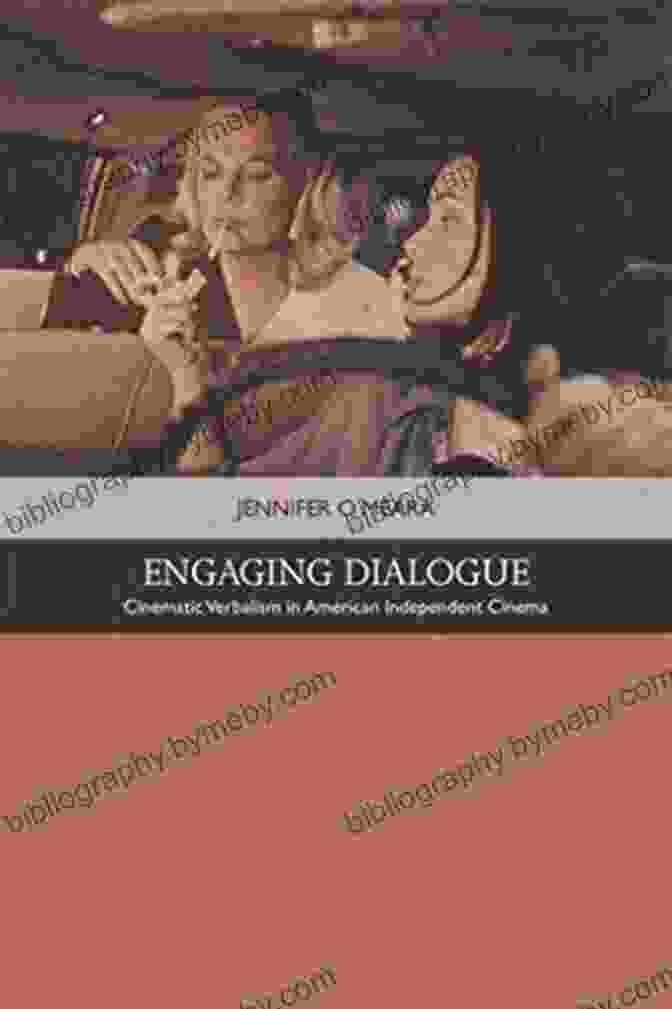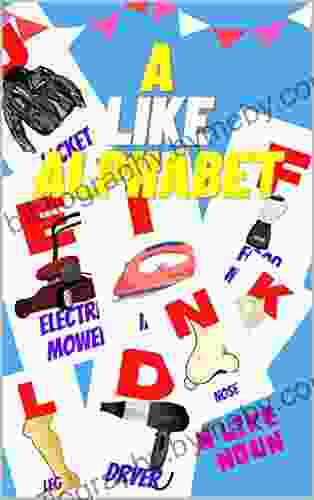Cinematic Verbalism In American Independent Cinema: Exploring Traditions In American Cinema


American independent cinema has long been a breeding ground for innovation and experimentation, and nowhere is this more evident than in the realm of cinematic verbalism.
Cinematic verbalism is a filmmaking technique that emphasizes the power of language and dialogue to create meaning and convey emotion. In the hands of skilled independent filmmakers, cinematic verbalism can be used to create characters that are both memorable and complex, to explore social and political issues, and to tell stories that are both personal and universal.
4.5 out of 5
| Language | : | English |
| File size | : | 1166 KB |
| Text-to-Speech | : | Enabled |
| Screen Reader | : | Supported |
| Enhanced typesetting | : | Enabled |
| Word Wise | : | Enabled |
| Print length | : | 240 pages |
| Paperback | : | 240 pages |
| Item Weight | : | 12 ounces |
| Dimensions | : | 6.06 x 0.83 x 8.07 inches |
A Tradition Of Innovation
The tradition of cinematic verbalism in American independent cinema can be traced back to the early days of the medium. In the 1950s and 1960s, filmmakers like John Cassavetes, Robert Altman, and Francis Ford Coppola began to experiment with new ways of using dialogue and language in their films.
These filmmakers rejected the conventional wisdom that dialogue should be used primarily to advance the plot. Instead, they used dialogue to create a sense of realism and authenticity, to explore the inner lives of their characters, and to comment on the social and political issues of their time.
Compelling Characters
One of the most striking features of cinematic verbalism is its ability to create compelling and memorable characters. Independent filmmakers often use dialogue to give their characters depth and complexity, to explore their motivations and desires, and to make them relatable to audiences.
For example, in the film Clerks (1994),director Kevin Smith uses dialogue to create a cast of characters who are both funny and heartbreaking. The characters talk about their lives, their relationships, and their dreams, and in ng so, they reveal their own unique personalities and perspectives.
Exploring Social And Political Issues
Cinematic verbalism can also be used to explore social and political issues. Independent filmmakers often use their films to comment on the world around them, to challenge the status quo, and to raise awareness of important issues.
For example, in the film Do The Right Thing (1989),director Spike Lee uses dialogue to explore the racial tensions that exist in a Brooklyn neighborhood. The characters talk about their experiences with racism, their hopes for the future, and their fears for their community.
Personal And Universal Stories
Cinematic verbalism can be used to tell stories that are both personal and universal. Independent filmmakers often use their films to share their own experiences, to explore their own emotions, and to connect with audiences on a human level.
For example, in the film The Squid And The Whale (2005),director Noah Baumbach uses dialogue to tell a semi-autobiographical story about his own family. The characters talk about their relationships, their struggles, and their hopes, and in ng so, they create a story that is both deeply personal and universally relatable.
Cinematic verbalism is a powerful filmmaking technique that can be used to create memorable characters, explore social and political issues, and tell stories that are both personal and universal. In the hands of skilled independent filmmakers, cinematic verbalism can be used to create films that are both entertaining and thought-provoking.
If you are interested in learning more about cinematic verbalism, I encourage you to check out some of the films mentioned in this article. You can also find more information on cinematic verbalism by searching online or by checking out books on the subject.
4.5 out of 5
| Language | : | English |
| File size | : | 1166 KB |
| Text-to-Speech | : | Enabled |
| Screen Reader | : | Supported |
| Enhanced typesetting | : | Enabled |
| Word Wise | : | Enabled |
| Print length | : | 240 pages |
| Paperback | : | 240 pages |
| Item Weight | : | 12 ounces |
| Dimensions | : | 6.06 x 0.83 x 8.07 inches |
Do you want to contribute by writing guest posts on this blog?
Please contact us and send us a resume of previous articles that you have written.
 Book
Book Novel
Novel Page
Page Chapter
Chapter Text
Text Story
Story Genre
Genre Reader
Reader Library
Library Paperback
Paperback E-book
E-book Magazine
Magazine Newspaper
Newspaper Paragraph
Paragraph Sentence
Sentence Bookmark
Bookmark Shelf
Shelf Glossary
Glossary Bibliography
Bibliography Foreword
Foreword Preface
Preface Synopsis
Synopsis Annotation
Annotation Footnote
Footnote Manuscript
Manuscript Scroll
Scroll Codex
Codex Tome
Tome Bestseller
Bestseller Classics
Classics Library card
Library card Narrative
Narrative Biography
Biography Autobiography
Autobiography Memoir
Memoir Reference
Reference Encyclopedia
Encyclopedia Ivica Milaric
Ivica Milaric Steve Burrows
Steve Burrows Rob Soria
Rob Soria Jody Studdard
Jody Studdard G Nyla Phillips
G Nyla Phillips Jeffrey Round
Jeffrey Round George A Akerlof
George A Akerlof Gen Tanabe
Gen Tanabe Garrett Grolemund
Garrett Grolemund Percy Kwong
Percy Kwong Radiance Dupree
Radiance Dupree Heather Down
Heather Down Mitch Peeke
Mitch Peeke Jimmie Holland
Jimmie Holland Michealene Cristini Risley
Michealene Cristini Risley Gennifer Choldenko
Gennifer Choldenko Gemma Rogers
Gemma Rogers Thomas Wilson
Thomas Wilson Owen Davis
Owen Davis Paul G Schempp
Paul G Schempp
Light bulbAdvertise smarter! Our strategic ad space ensures maximum exposure. Reserve your spot today!

 Ken SimmonsTen Years In The Ranks Army: An Unforgettable Journey of Service, Sacrifice,...
Ken SimmonsTen Years In The Ranks Army: An Unforgettable Journey of Service, Sacrifice,... Lord ByronFollow ·15.3k
Lord ByronFollow ·15.3k Grant HayesFollow ·7.3k
Grant HayesFollow ·7.3k William GoldingFollow ·13.7k
William GoldingFollow ·13.7k Lawrence BellFollow ·6.6k
Lawrence BellFollow ·6.6k Ian PowellFollow ·13.7k
Ian PowellFollow ·13.7k Jules VerneFollow ·4.5k
Jules VerneFollow ·4.5k Walter SimmonsFollow ·11.4k
Walter SimmonsFollow ·11.4k Abe MitchellFollow ·6.5k
Abe MitchellFollow ·6.5k

 Brian West
Brian WestSmedley Butler: The Marines and the Making and Breaking...
: A Marine's...

 Gabriel Garcia Marquez
Gabriel Garcia MarquezIschia, Capri, Sorrento, Positano, And Amalfi: An...
Explore the...

 Felix Carter
Felix CarterAdorn Your Little Princess with Fleur Ange's Exquisite...
Welcome to the enchanting...

 Kelly Blair
Kelly BlairUnveiling the Secrets of the Historical Way and Fishermen...
Step into the pages...

 Angelo Ward
Angelo WardKnit the Cutest Thumbless Mittens for Your Little One:...
Prepare to be...
4.5 out of 5
| Language | : | English |
| File size | : | 1166 KB |
| Text-to-Speech | : | Enabled |
| Screen Reader | : | Supported |
| Enhanced typesetting | : | Enabled |
| Word Wise | : | Enabled |
| Print length | : | 240 pages |
| Paperback | : | 240 pages |
| Item Weight | : | 12 ounces |
| Dimensions | : | 6.06 x 0.83 x 8.07 inches |












